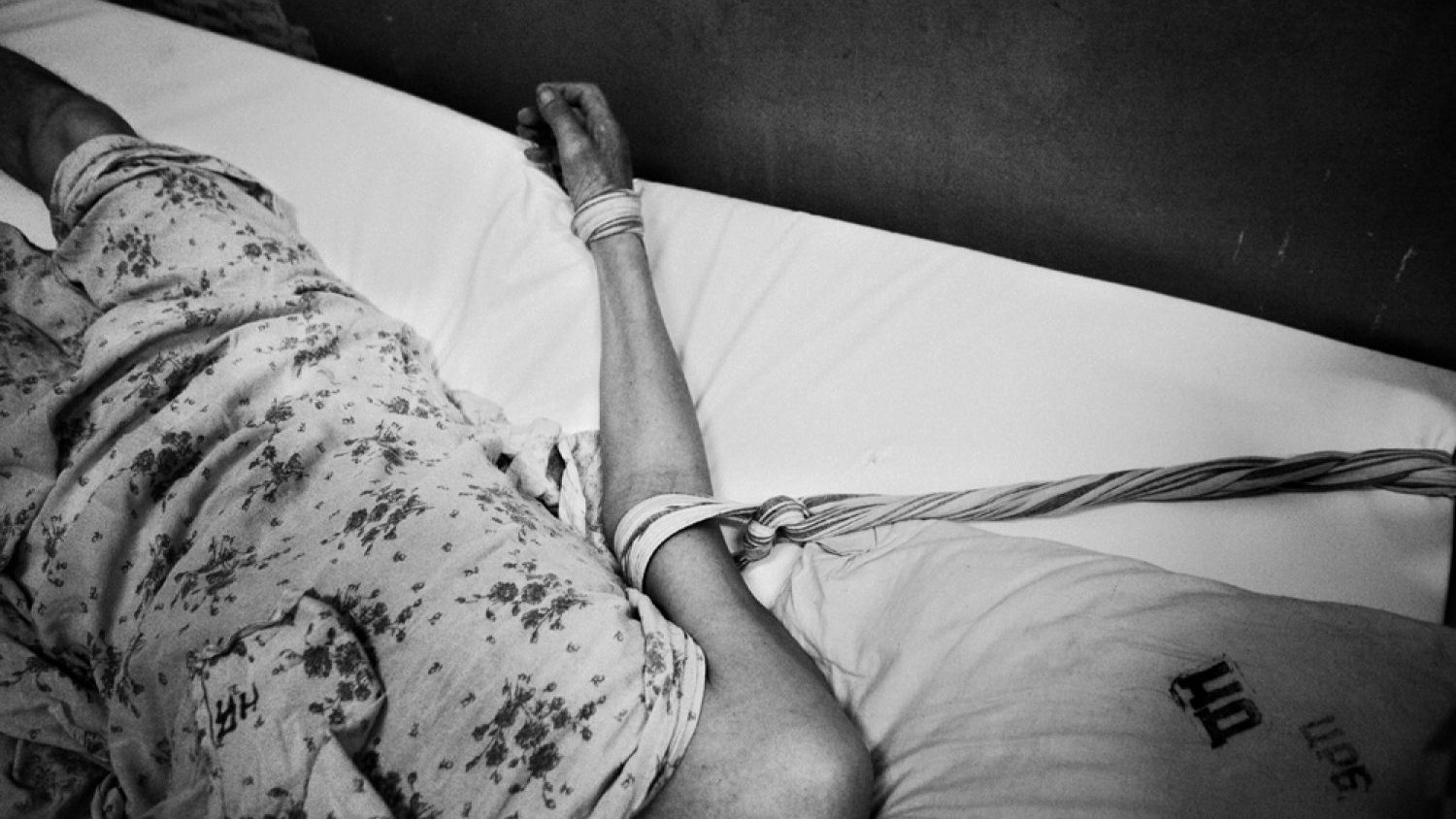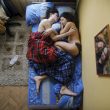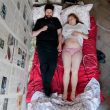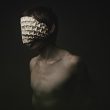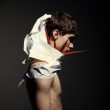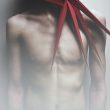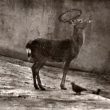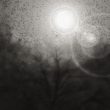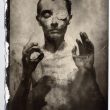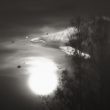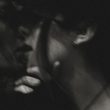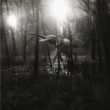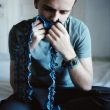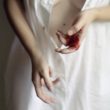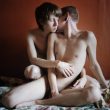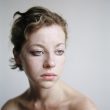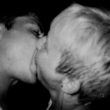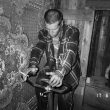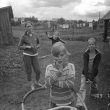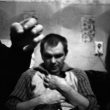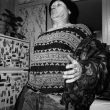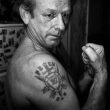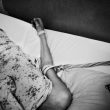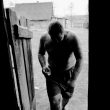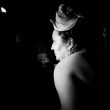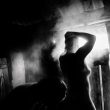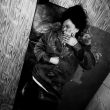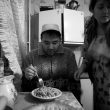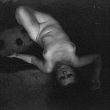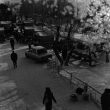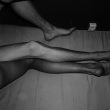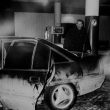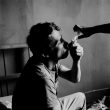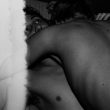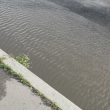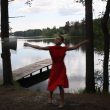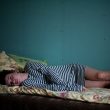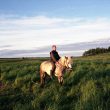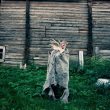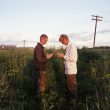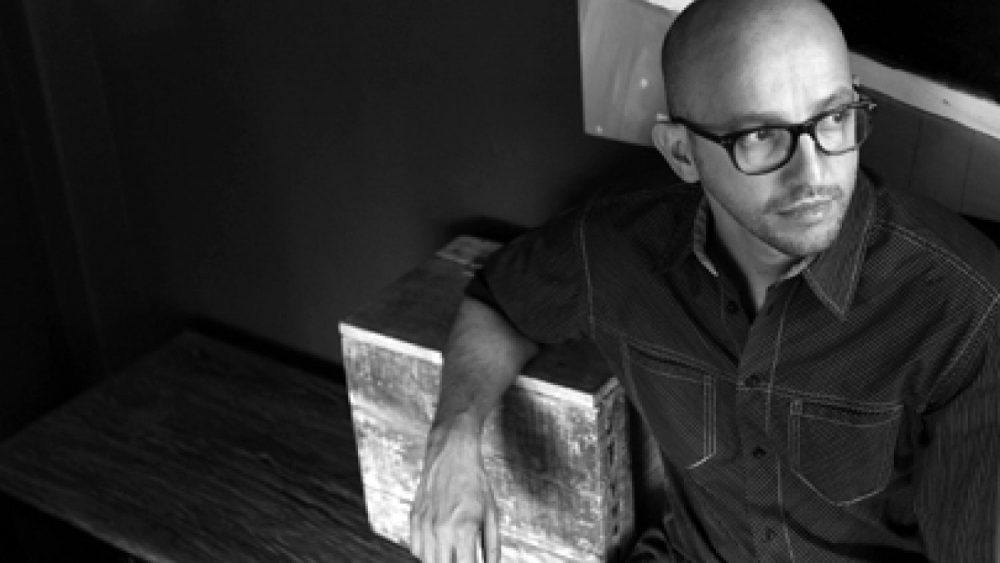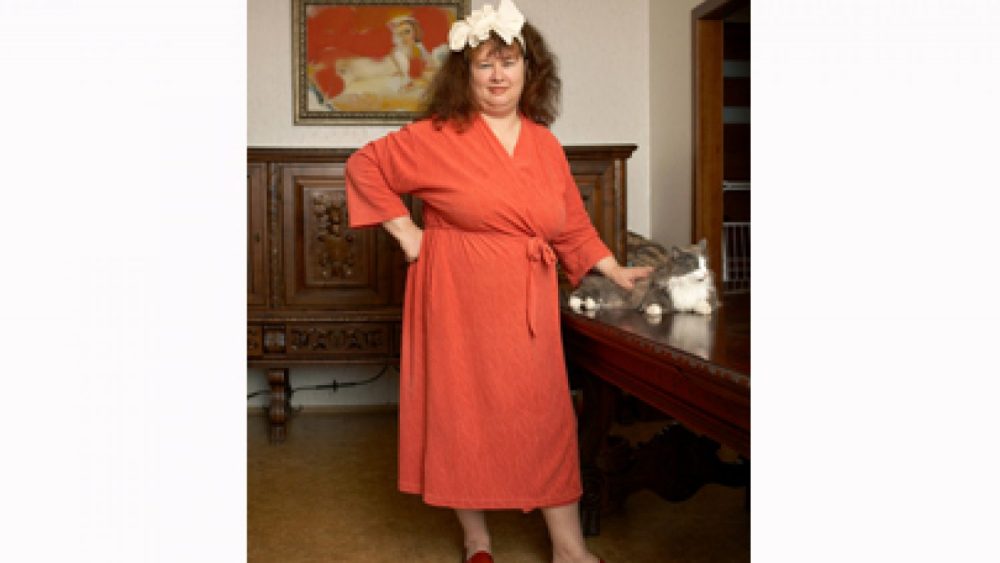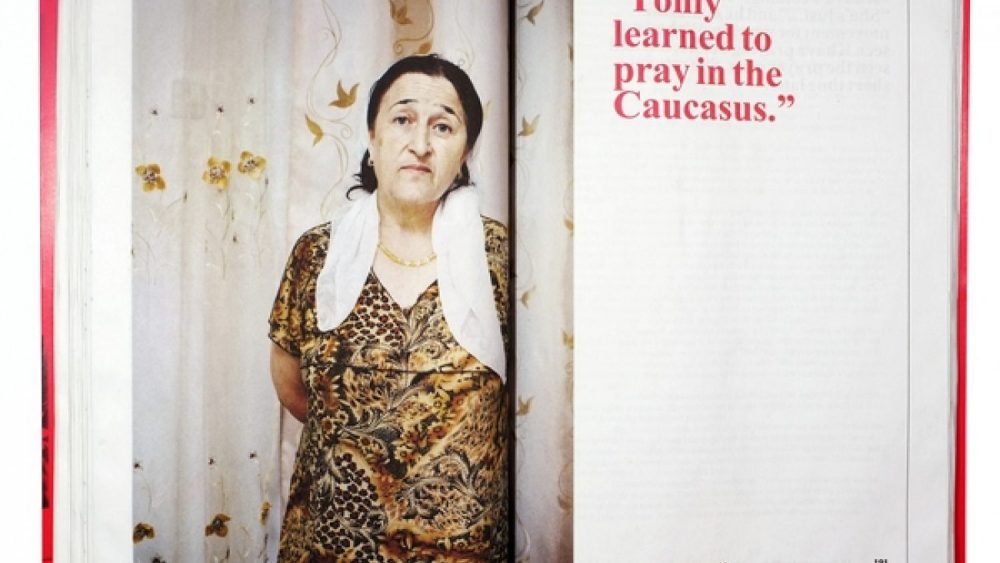The First Wave
Most likely a few years ago it would be quite impossible to write an article like this about the generation of young and active Russian photographers. Today it’s even hard to imagine what names would be mentioned in relation to this subject. Yet, on the other hand, this was the time when the name of the Russian photographer Alexander Gronsky (although he was born in Tallinn and now lives in Riga) appeared on the international photography scene.
Awards in the most prestigious competitions, participation in the most important festivals, solo exhibitions at the FOAM Museum and Aperture gallery – perhaps it is due to Gronsky that the world got prepared for other Russian photographers as well. Besides, it matched with the increasing will to speak and to be listened to. Despite the fact that none of the young photographers has reached Gronsky’s level of success either in Russia or on the global scale, there is a lot to tell about the generation of the young Russian photographers.
During the last two years around twenty names, which are recognized by international curators and editors of various publishing houses, have appeared. These are photographers, who have got significant awards in international competitions, portfolio reviews and festivals, as well as have had their works published both in online and printed magazines. The following article offers a brief overview on the most interesting subjects and authors, as well as some insight in the situation the art and documentary photography finds itself in Russia today.
You would think that in such a big country as Russia there must be several support agencies – photo organisations. Nevertheless, at the moment there are only three cities, where young photographers can practice, namely, where they can study, get some publicity and open exhibitions.
First, of course, is Moscow, where for more than fifteen years the Moscow House of Photography has been around organising various festivals. Five years ago the House of Photography opened the Rodchenko Moscow School of Photography and Multimedia – without this institution several famous photographers would not be discovered.
Second on the map is Saint Petersburg, where for more than fifty years the independent educational establishment – the Faculty of Photojournalism (commonly referred to as the Photo Faculty) has had its doors open for students. Sergei Maximishin, Anatoly Malcev, Dmitriy Lovecky, as well as art photographers Alexander Kitaev, Dmitriy Konradt and others have graduated from this faculty. Many of our contemporary authors have graduated from the Photo Faculty.
Those, who later followed the path of photojournalism, paved their way to success by participating in the exhibitions and projects organised by the Foundation of PhotoDepartment. It is an organisation that for five years has been following the activities of young Russian photographers and has been putting them on show in the Young Photography project, with a jury consisting of famous curators. One of the most successful collaboration examples is the project carried out by Ulrich Haas, the curator and creative director of the international photo festival Backlight. After two years of participation in the project, the exposition Territories of Desire was organised with twenty young photographers taking part. The exhibition was opened in September in Tampere and since then has become one of the central events of the Backlight festival.
The third centre of photography is Krasnodar. It can be said with confidence because this city in the Southern part of the country, where even in October the air is so warm that it is possible to take a swim in the Black Sea, is also a home for the international photography festival Photovisa. Thanks to the activities of local scale the world got introduced to such photographers as Margo Ovcharenko, whose works have been included in the selected works of ReGeneration2, but the exhibition has been included in the programme of New York Photography Festival. And also, Sergei Lucenko whose solo exhibition took place at the young art space Start belonging to the contemporary art centre VINZAVOD in Moscow.
What is left beyond the mentioned projects and organisations are the movements and new authors, which can hardly be attached to any infrastructural elements playing some role in their professional growth. These photographers have already passed through the young phase and currently are in the so-called emerging level keeping their feet firmly on the ground. In Russia there are no specialised grants for photographers, in fact, they are scarcely accessible to contemporary art representatives in general (although they have considerable art bonuses). Neither there are any art residency programmes or educational groups, where discussions about photography as a space and medium in constant flux would be held. Theory and art criticism are underdeveloped. As a result, the contemporary Russian photography does not speak the same language as the rest of the world, examining and reflecting on issues that were image related as far as in the 1980-ies. Yet, what emerges from this naivety of photography pioneers is certain strength composed of talent and goal-orientated mindset. It becomes visible in the works of young photographers not through knowledge and analyses, but rather through inner ups and downs with severe emotionality, which is not possible to develop in college.
Perhaps that is the reason why there are so many narratives which when encountered allow the spectators to enjoy solitude pondering, whether the past and present before their eyes belong to them or the photographer. Anything can turn out to be crucial – whether it was someone you met accidentally on the street or weird photographs from family albums. Such is the photographer’s Aleksander Sedelnikov (Saint Petersburg) project See You Later, where the spiritual merges with the temporal resulting in physical intimacy with cracks in time. The author studied at the Photo Faculty, where his diploma work remained underestimated – it was a weird story of an abandoned sanatorium somewhere in the Ural Mountains. Furthermore, his training in workshops abroad often resulted in friendship with lecturers – Peter ten Hoopen, Morten Andersen and Michael Ackerman. The latter shows the works of the Russian photographer in his seminars as a sample of a personal tale being very intimate and endowed with various interpretation possibilities, created for you and others to contemplate the world. The main characters of Sedelnikov’s photographs are weirdoes and outsiders who have marginalised themselves according to their own will – in the city, society and life in general. The photographer has learnt to stay with them for a long time unnoticed, as if they were alone. The black-and-white and gloomy images have been published in the book Self Publish, Be Naughty with the official release date set in autumn this year.
The story of Nikita Pirogov (Saint Petersburg) started in the summer of 2010, which he spent in his studio by the computer – eye to eye with himself and photo archives. This process was where the project The Other Coast found its roots. Here, the enclosed images at the first sight might seem illogical – covering various genres, beginning with documentary portraits and ending with minimalistic still lives or everyday situations, as well as paused videos which resemble photographs that gradually become “alive”. With this project that was conceptually well-thought and designed from the narrative to the exposition and performance, Nikita Pirogov went to portfolio reviews in Budapest and Vienna where he got first prizes. His name has been mentioned by the leading photo blogs and magazines, including 1000Words Magazine, Dazed Digital, The Telegraph and EIKON. The first solo exhibition abroad took place in the Image gallery in Aarhus (Denmark). Soon it will be followed by another exhibition in Bratislava.
The path from the first picture to the professional photography was only three years long in the case of Tatyana Plotnikova (Saint Petersburg). For a young photographer such acceleration is very impressive. Her teacher was Sergei Maximishin – one of the most popular Russian photojournalists. Straight after graduating from the Photo Faculty Plotnikova started her cooperation with several publishing houses and became one of the leading authors of the magazine Russian Reporter. Together with them Plotnikova started participating in exhibitions and festivals (for instance, in China) and with their support and delegated by them Plotnikova went taking photographs all around the country and the world. Her photographs can be immediately recognizable – black-and-white, deep coverage somewhere between involvement and journalism. The fairytale-like mysteriousness characteristic to a big country and the enormous power emerge in quite a few of her stories that are related to a contemporary life, at the same time causing a feeling that time has stopped and we are looking through centuries catching a glimpse of what we sometimes refer to as the Russian soul.
A graduate of the Photo Faculty and a participant of NOOR-Nikon documentary photography master class Daria Tuminas got the first prize in the international competition Viewbook Photostory 2010. Her project Ivan and the Moon about two brothers from the rural areas of Arkhangelsk brought the long awaited fresh breeze in the documentary photography that finally went beyond the limits of the genre. During one year she took the first prize and an opportunity to open a solo exhibition in Amsterdam, which was followed by a festival in Lodz (Poland) and other exhibitions. Also, she was awarded the Lucie Foundation grant for continuing work and she commenced MA studies in Film and Photographic programme at Leiden University Institute for Cultural Disciplines. At the moment she keeps taking photographs in Russia. When looking at her works, the most surprising fact that strikes is that it is not possible to tell whether the photographs present the fantasy of teenagers living in the countryside, or it is a game or imagination or just a regular situation from everyday. Who is the one that gives orders – is it the photographer who directs the characters or vice versa? Or maybe it is the photographer who controls how the spectators perceive the photographs? The curators and competition juries must have fallen in love with this ethereal and at the same time obvious fairytale.
It must be noted that after finishing their studies, many young photographers split off from the documentary photography tradition and move over to exposing more personal subjects and personal way of seeing the mundane reality that more corresponds to their own comprehension of the past and the present. Along these lines the story Russian Youth by Irina Yulieva has been produced. She has immortalised her daughter and her daughter’s relationship with friends in Sabska – a suburban town near Saint Petersburg. Besides, she has taken the photographs with a camera that she has managed to get hold of – a simple digital camera with a date print on the margins of the black-and-white photographs and a flash that cannot be turned off. Thus she vividly portrays the puberty period, girly discoveries, rebellion and freedom that are so characteristic in this tender age. After taking photographs for one year, the project grew more extensive and obtained another title The Provincial Hopes and was exhibited in the exhibition The Young Photography 2010. Time. At the moment this project has been also included in the programme of the Backlight 2011 festival and will be printed as a book with several chapters in the final phase of the project.
Kir Esadov (Moscow) was born in the family of circus artists. Initially he studied pedagogy and later graduated from the Rodchenko Moscow School of Photography and Multimedia. He always says what’s on his mind, although frequently it’s difficult to distinguish whether he speaks truth or it’s the fruit of fantasy. Likewise, his photographs are as enigmatic and confusing. The indescribable world of fantasy is created as a result of complicated manipulations – the imagery appears both in computer and hand graphics. The spectator comes across a deer with a human head, the elephants, which are flying high in the blue sky, and human beings, who are beautiful and vulnerable. In the end a single image is created, which is then digitally multiplied. His texts are so open and penetrating, that the spectators can be on their way to discovering truth or at least to the issues they have been hiding from themselves. Kir Esadov reveals the fear and poignancy a human being is suppressing and hiding, sometimes being cruel to himself as the first carrier of the fear, which becomes tangible through his photographs.
The first exhibition of Margo Ovcharenko (Krasnodar) that consisted of twelve works was opened in 2008 in the framework of the project My Own Name in Saint Petersburg. Her work was greatly influenced after attending the Dutch photographer Hellen van Meene’s workshop, which was followed by two-year studies at the Rodchenko Moscow School of Photography and Multimedia. Now the author’s portfolio also has a record of participation in one of the most creative residencies in Europe – the Fabrica founded by Benetton. The first colourful photographs register youth, bright faces and a lost opportunity to return to innocence. These are the works that Ovcharenko starts cooperation with the Gallery RTR in Paris and aged only twenty she organises an exhibition together with one of the most renowned contemporary Russian photographers Evgeniy Mohorev at the Photography Centre in Denmark. In 2011 her series Hermitage that was taken during the Fabrica residency was included in the New York Photography Festival. No matter what the continuation is, Ovcharenko is one of the authors whose photographs expose the childhood and pain (both spiritual and physical) studies that have formed and crippled us. Yet, what distinguishes these works from others is the contemporary form that makes us examine our own depth of pain.
The black horse of the new photography Pavel Platonov (Rostov-on-don) is practically unknown in Russia. In his native town he is a noteworthy architect and designer, who creates massive constructions of cardboard, metal, wood and paper. Some of these colossal forms he combines with the human body and takes photographs investigating the movements of the body and texture paired with the texture of the materials turning them into one object. His works have been published in photography and design blogs abroad, yet it is hard to find any web-based textual information or interviews. He is not talkative, instead – he is very certain both in texts and photographs. And perhaps this feature allows drawing parallels between his works and large-scale architecture.
The projects of Jana Romanova – especially the powerful and vivid series taken during the last year that has conquered the attention of spectators on a global scale – are based on the combination that she has managed to discover and maintain. It is a mixture of distance and interaction at the same time. In her project Waiting she has chosen one precise angle of the camera – it is located just above sleeping couples. Thus she is not a photographer but a gaze from the future that observes the process of waiting and coming of a significant moment. The photographer has kept a maximum distance not to intervene with the natural gestures of the relationship between the couples. Yet, at the same time the photographer is included in their lives as a long-term observer. In the project about rescuers Heroic Heroes Jana Romanova has been participating for nearly three years. She literally lives among the rescuers becoming part of the world of the heroes for whom being heroic has become an integral and important part of their lives. This timely project, which is still in progress, has been dedicated to the overcoming of distance, which is underlying the occupation hero.
Lack of an educational system does not imply that the photography tradition and heritability are non-existent. What must be specially regarded is the selflessness and inner strength that is the Russian photographer’s soul. Like an ocean that hides a storm – the first Russian photography wave will definitely stir other waters as well.
